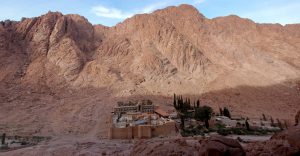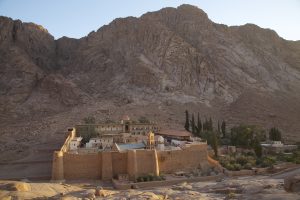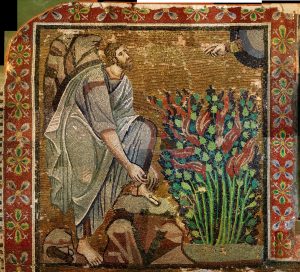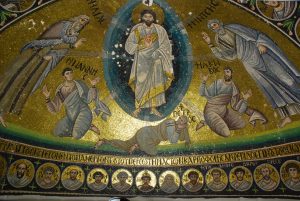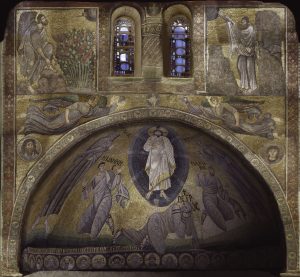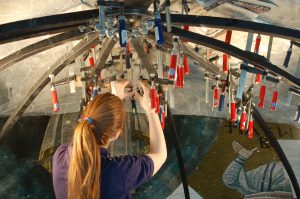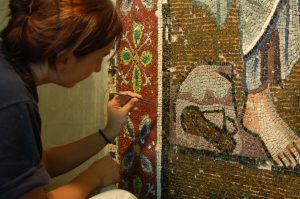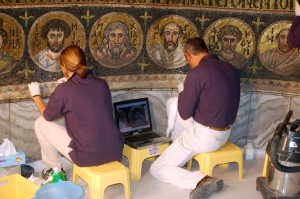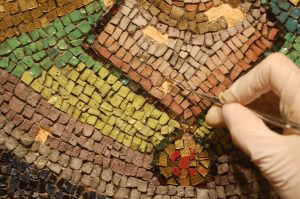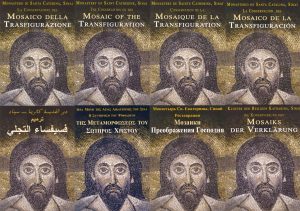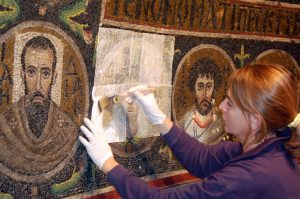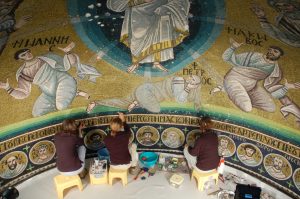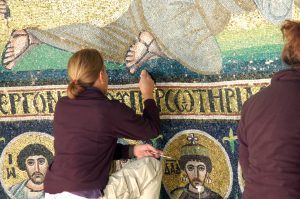Monastery of St. Catherine
Tucked among the rugged granite mountains of the Sinai range, at the base of the mountain linked to the biblical story of Moses receiving the Ten Commandments, beneath a dry, clear sky shedding a dazzling light, the Monastery of Saint Catherine has for fifteen centuries preserved the sacred memory of one of the most venerated places on the planet, as well as works of art and history that are among the richest and most important of the world’s cultural heritage.
Among these, the mosaic of the Transfiguration of Christ, which decorates the apse of the monastery basilica, represents an outstanding moment in sixth-century Byzantine monumental art. Alarmed by the mosaic’s serious condition, His Eminence, Archbishop Damianos, and the entire monastic community engaged the CCA to preserve the work.
The extraordinary monastic complex was erected at the command of the emperor Justinian on the site venerated as the place where Moses spoke with God in the Burning Bush.
Located at an altitude of 1500 meters in a gorge at the foot of the gebel Moussa, the massive fortified walls of the Monastery encircle and protect the life of the monks, marked for centuries by the sound of the bells calling them to prayer from dawn to dusk according to the monastic tradition of the Greek Orthodox church.
Within the walls, the buildings appear like an ancient city crowded with the styles and architecture of various periods. They wind along a maze of small streets, all concentrated around the basilica built by the architect Stephanus of Aila (Eilat, Aqaba) between A.D. 548 and 565.

